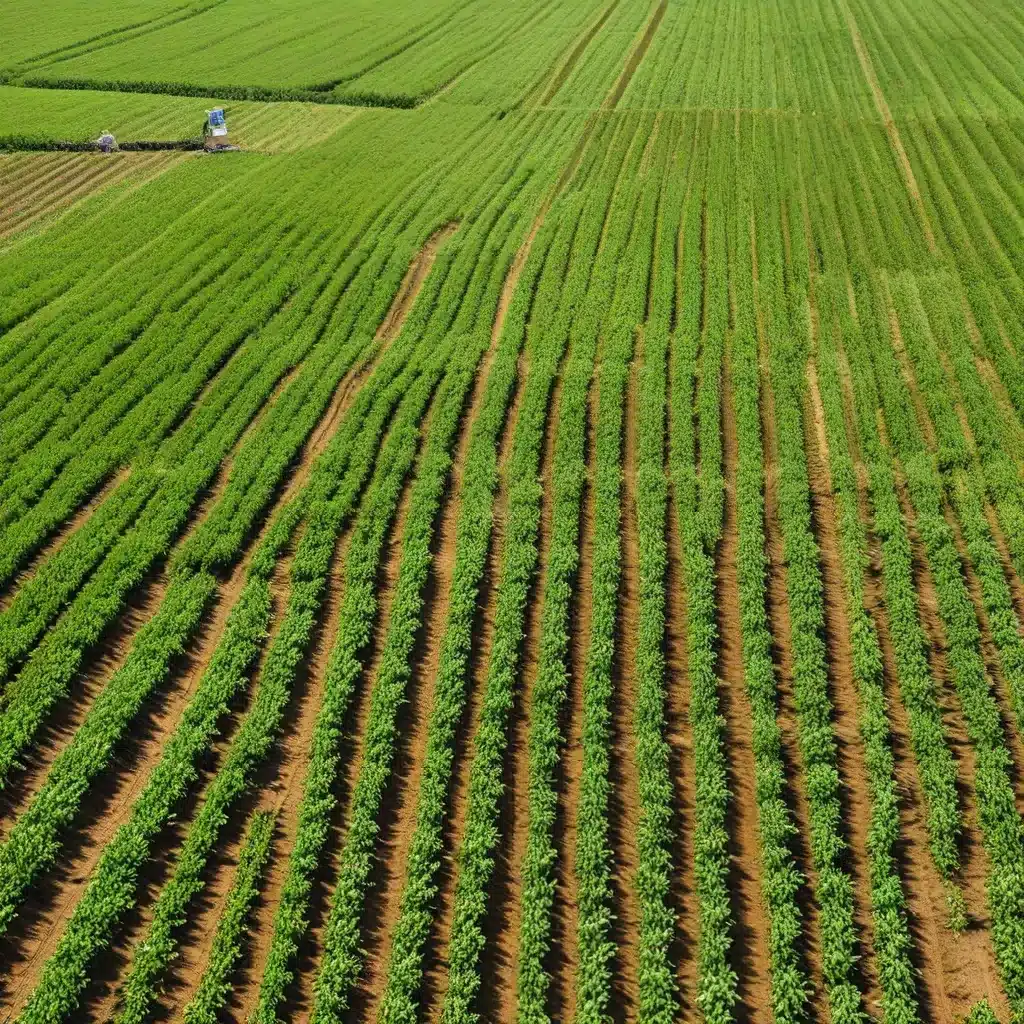
In the ever-evolving landscape of technological advancements, the role of sensor networks and Internet of Things (IoT) has become increasingly crucial, particularly in the realm of sustainable agriculture. As the global population continues to grow, the demand for efficient and eco-friendly food production has become a pressing concern. Fortunately, the integration of sensor networks and IoT applications has paved the way for a new era of precision farming, offering unprecedented opportunities to optimize crop yields, reduce resource consumption, and enhance overall sustainability.
Understanding Sensor Network Architectures for Agriculture
At the core of precision farming lies the intricate web of sensor networks, which serve as the backbone for data collection and analysis. These networks comprise a variety of sensors, each designed to monitor specific environmental conditions, such as soil moisture, temperature, light intensity, and atmospheric parameters. By strategically deploying these sensors throughout the agricultural landscape, farmers can gain real-time insights into the health and needs of their crops, enabling them to make informed decisions that maximize productivity and minimize waste.
One of the key advantages of sensor networks in agriculture is their ability to adapt to varying terrain and environmental conditions. From wireless sensor nodes deployed in remote fields to wired sensor arrays integrated into sophisticated greenhouse systems, the flexibility of these networks allows for customized solutions that cater to the unique requirements of each farming operation. By leveraging data analytics and machine learning algorithms, these sensor networks can even identify patterns and predict potential challenges, enabling proactive interventions and optimized resource allocation.
Sustainable Agriculture: IoT Applications and Precision Farming
The integration of IoT technologies into sensor networks has further amplified the capabilities of precision farming. Through the seamless connectivity provided by IoT, farmers can remotely monitor and control various aspects of their operations, reducing the need for manual labor and optimizing resource utilization. For example, smart irrigation systems powered by IoT can automatically adjust water flow based on real-time soil moisture data, ensuring that crops receive the necessary hydration without wastage.
Moreover, IoT-enabled drones and robotics have revolutionized the way farmers approach pest and disease management. These autonomous systems can be programmed to survey the fields, identify problem areas, and even selectively apply targeted treatments, minimizing the use of harmful chemicals and promoting a more sustainable ecosystem.
Addressing Energy Challenges in Sensor Networks
One of the key challenges in implementing sensor networks for agricultural applications is the efficient management of energy consumption. These networks often operate in remote locations, making access to reliable power sources a significant concern. Energy-efficient sensor design, low-power communication protocols, and innovative energy harvesting techniques have emerged as crucial strategies to overcome this hurdle.
Solar-powered sensor nodes, for instance, can leverage the abundant sunlight in agricultural settings to generate their own electricity, reducing the reliance on grid power or battery replacements. Wireless power transfer technologies, such as inductive or resonant charging, also offer promising solutions, enabling seamless recharging of sensor devices without physical connections.
Ensuring Robust Security in IoT-Driven Sensor Networks
As with any technology that relies on interconnectivity, the security of IoT-driven sensor networks in agriculture is of paramount importance. Cybersecurity threats, such as data breaches, unauthorized access, and system compromises, can have devastating consequences, jeopardizing the integrity of agricultural operations and compromising sensitive data.
To address these concerns, robust security protocols, encryption algorithms, and access control mechanisms must be implemented across the sensor network infrastructure. Blockchain technology, for instance, has shown promise in securing data transactions and ensuring the traceability of agricultural processes, further enhancing the trustworthiness of the overall system.
The Future of Sensor Networks in Sustainable Agriculture
The future of sensor networks and IoT in sustainable agriculture is undoubtedly bright, with ongoing advancements and innovative applications continuously emerging. As research and development in this field continue to evolve, we can expect to see even more sophisticated sensor technologies, enhanced data processing capabilities, and seamless integration with other agricultural systems, such as precision machinery and smart greenhouses.
By embracing the power of sensor networks and IoT, the agricultural industry is poised to revolutionize food production, reduce environmental impact, and improve the overall sustainability of our global food systems. As we navigate the challenges of the 21st century, the strategic deployment of these technologies will play a crucial role in ensuring food security, promoting environmental stewardship, and securing a more sustainable future for generations to come.
Explore the sensor-networks.org website to delve deeper into the latest advancements, case studies, and industry insights surrounding this transformative field.